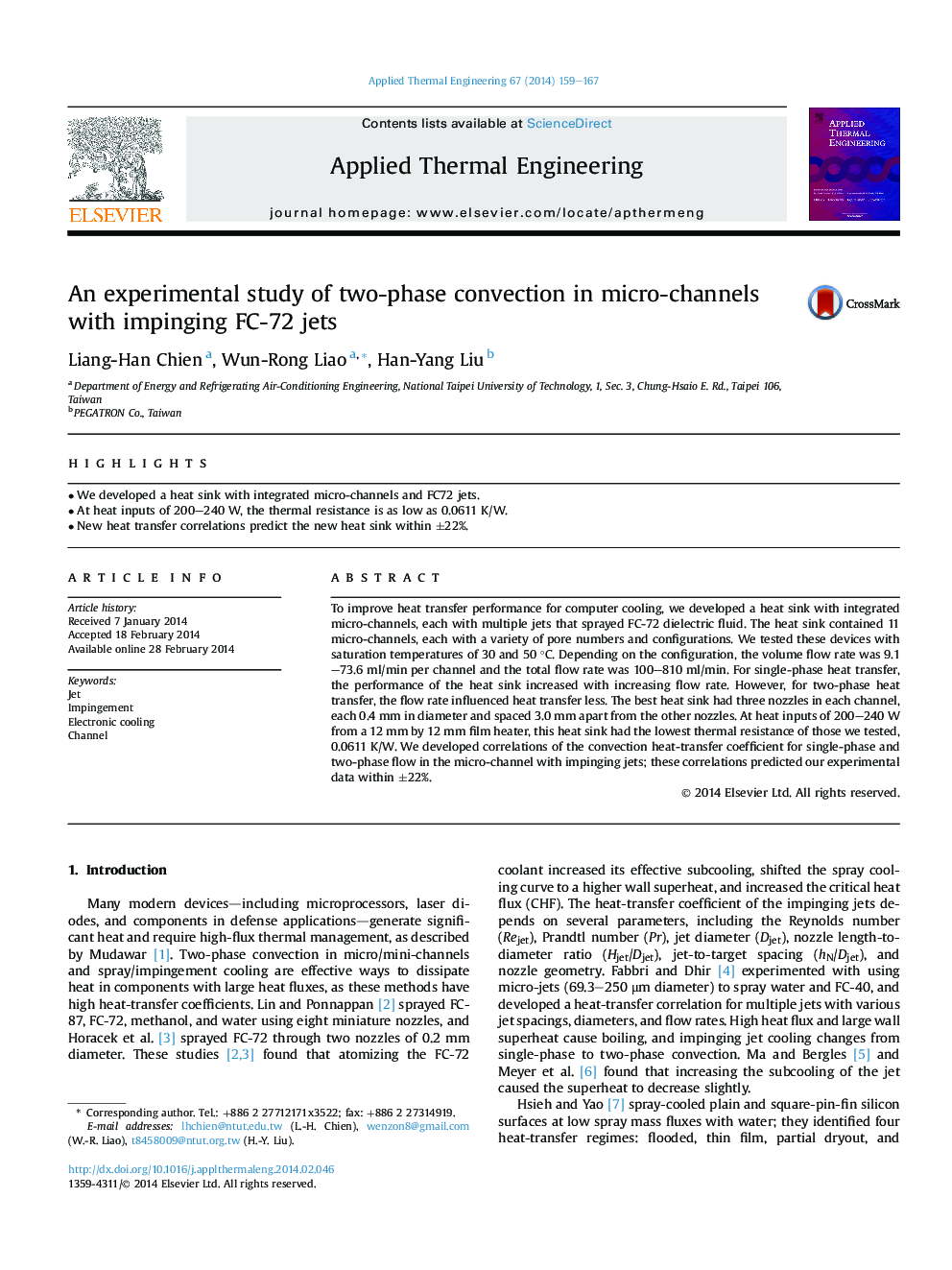| Article ID | Journal | Published Year | Pages | File Type |
|---|---|---|---|---|
| 646487 | Applied Thermal Engineering | 2014 | 9 Pages |
•We developed a heat sink with integrated micro-channels and FC72 jets.•At heat inputs of 200–240 W, the thermal resistance is as low as 0.0611 K/W.•New heat transfer correlations predict the new heat sink within ±22%.
To improve heat transfer performance for computer cooling, we developed a heat sink with integrated micro-channels, each with multiple jets that sprayed FC-72 dielectric fluid. The heat sink contained 11 micro-channels, each with a variety of pore numbers and configurations. We tested these devices with saturation temperatures of 30 and 50 °C. Depending on the configuration, the volume flow rate was 9.1–73.6 ml/min per channel and the total flow rate was 100–810 ml/min. For single-phase heat transfer, the performance of the heat sink increased with increasing flow rate. However, for two-phase heat transfer, the flow rate influenced heat transfer less. The best heat sink had three nozzles in each channel, each 0.4 mm in diameter and spaced 3.0 mm apart from the other nozzles. At heat inputs of 200–240 W from a 12 mm by 12 mm film heater, this heat sink had the lowest thermal resistance of those we tested, 0.0611 K/W. We developed correlations of the convection heat-transfer coefficient for single-phase and two-phase flow in the micro-channel with impinging jets; these correlations predicted our experimental data within ±22%.
